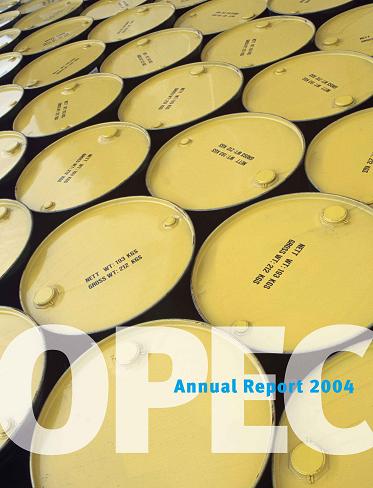|

(picture source: Day by Day)
{此文為 “$100,000 per Barrel Oil” 之漢文翻譯。 原文撰於2009年七月十七。 財經數據依當時為主。}
請留意、此文只是趣味性思考型實驗,用以敘述石油價格上漲的龐大潜力。
假設:
1. 供給面(當需求面不變時)或需求面(當供給面不變時)每一個百分比的變動造成百分之10至30的變動。這聽說於資深商品期貨交易員的經驗。歡迎文獻求證。因為石油的「供給」與「需求的價格彈性」均屬於「缺乏彈性」,此假設應屬合理 [註1]。
2. 後哈伯特頂點之環球石油產量以坎塔雷爾 (Cantarell) 油田年遞減率13.1%的數度下降。幅度雖大,但因墨西哥鄰近美國,我認為墨西哥油田產量有較高的透明度、不同於沙烏地阿拉伯 [註2]。因此、優於代表後頂點環球石油生產狀況。
3. 以最近18個月的最高與最低油價之平均值代表長期油價。
計算:
1. 於10%至30%取其正中央支點、即20%、作為供給或需求端、在另一端不變的情況、每個百分比之變動對油價所造成的影響。
2. 13.1%的年遞減率、於環球石油需求量不變下、可推升油價10.896倍! 程式: 1.2 (20%漲價) 的13.1次方 = 10.896
3. 三年後、油價可漲1293.6倍,如果每一年漲10.896倍。程式: 10.896的三次方 = 1293.6
4. 計算出2008年至今的最高與最低油價、分別為$147.9與$35.13、之平均值;我們取得每桶$91.515。程式: ($147.9 + $35.13) ∕ 2 = $91.515
5. 將$91.515成於1293.6,我們取得每桶$118,383.8!!
可能嗎? 根據一分估計、2000年三月十號的美國耐斯達克(NASDAQ)股市 [註3] 本益比高達264。 上星期五、2009/7/17、耐斯達克100指數ETF基金(即PowerShares QQQ Trust I、簡稱Cubes [註4] )成交於本益比22.8。 2000年三月十號時耐斯達克大盤收盤於5048.62。 2009/7/17的大盤收盤於1886.61。 耐斯達克股市本益比在 2000年全球科技股泡沫化頂點之本益比,是現今該市本益比的十倍以上! 但幾乎十年後,該股市大盤仍舊不及千禧年頂點指數值的一半…
看來、2000年三月的科技股頂點本益比已反應了、從該頂點算起、至少二十年後的未來。我認為: 石油成交價如果只需反映未來三年的基礎面,是較容易實現。
然而、這只是趣味性思考型實驗。
[註1] 請參考「需求的價格彈性」和「缺乏彈性」網頁、與「供給的價格彈性」網頁。
[註2] 沙烏地阿拉伯國內石油產量視為國家機密,洩漏者將處與死刑。
[註3] 請參考 「耐斯達克股市」。
[註4] 耐斯達克100指數ETF基金、PowerShares QQQ Trust I、的股票代號為 “QQQQ”。 因英文字母 “Q” 的發音接近 “Cube” 、方塊、華爾街的交易員暱稱這支股票 “Cubes”。
DISCLOSURE: The information contained in this article should not be misconstrued as an offer to buy or sell securities. Always consult a professional advisor before making an investment. The author holds no positions in any commodities futures. But I am 100% long in oil and energy stocks.
$100,000 per Barrel Oil
Please note that this is only an interesting thought experiment to illustrate the huge potential for oil’s price escalation.
Assumptions:
1.Every percentage change of supply (while holding demand constant) or demand (while holding supply constant) results in roughly a 10 to 30 percent change in price. I heard that this tends to be the experience of long time commodities traders. Citation welcomed. But given that both the price elasticity of demand and supply for oil is very inelastic, this assumption sounds reasonable.
2.Post-Hubbert peak global oil production decreases at the Cantarell Field-like rate of 13.1% annual decline. While large, due to geographical proximity of Mexico, I think this Mexican oil field should have the highest production transparency, unlike Saudi Arabia. Therefore, actually a good proxy for post-peak oil global petroleum production.
3.In order to get an approximation for long-term oil price, we will take the average of the highest and lowest oil price over the past 18 months or so as a proxy for the current oil price.
Calculation:
1.Taking the mid-point of 10 and 30 percent gives us 20% for every percentage change in supply or demand while holding the other factor unchanged.
2.The 13.1% annual production decline rate, holding global oil demand constant, would result a price increase of 10. 896 times! Equation: 1.2 (20% price increase) raised to the 13.1th power = 10.896
3.Three years into the future, oil price goes up 1293.6 times, if price goes up 10.896x every year. Equation: 10.896 raised to the 3rd power = 1293.6
4.Taking the highest and lowest oil price from the beginning of 2008 to now (147.9 and 35.13 respectively), and average them, we get $91.515 per barrel. Equation: (147.9 + 35.13) / 2 = 91.515
5.Multiply 1293.6 by $91.515, we get $118,383.8 per barrel!!
Is it possible? On March 10, 2000, according to one estimate, Nasdaq’s p/e ratio reached an incredible 264. At the market close of Friday July 17th, 2009; the Nasdaq 100 index ETF, PowerShares QQQ Trust I (or “cubes”), trades at the p/e ratio of 22.8. On March 10, 2000, the Nasdaq composite closes at 5048.62. The composite closes at 1886.61 on 7/17/09. Nasdaq’s p/e at the 2000’s tech bubble peak is more than 10 times today’s p/e ratio! Yet the composite still trades at less than half of its millennial peak value today, almost ten years after…
Looks like the p/e ratio at the tech stock’s market top in March of 2000 reflects future expectation more than two decades, from the time of market top, into the future. My opinion: it’s easier for oil to trade at price level reflecting fundamentals only three years into the future.
Again, this is only a thought experiment…
Saturday July 18, 2009 10:40 AM Kaohsiung City, Republic of Taiwan
DISCLOSURE: The information contained in this article should not be misconstrued as an offer to buy or sell securities. Always consult a professional advisor before making an investment. The author holds no positions in any commodities futures. But I am 100% long in oil and energy stocks.
|